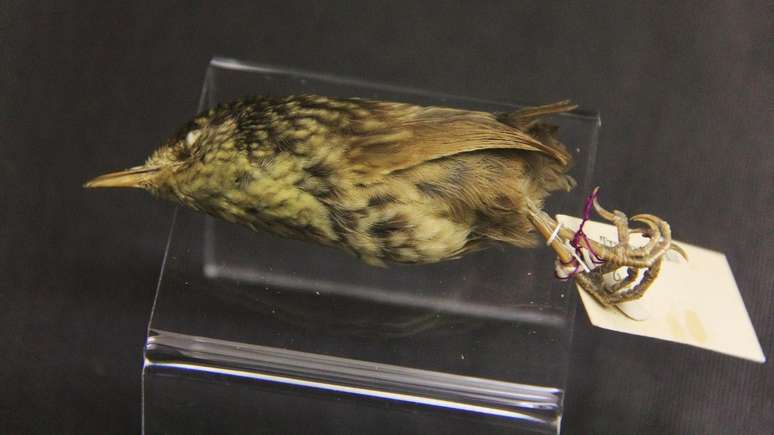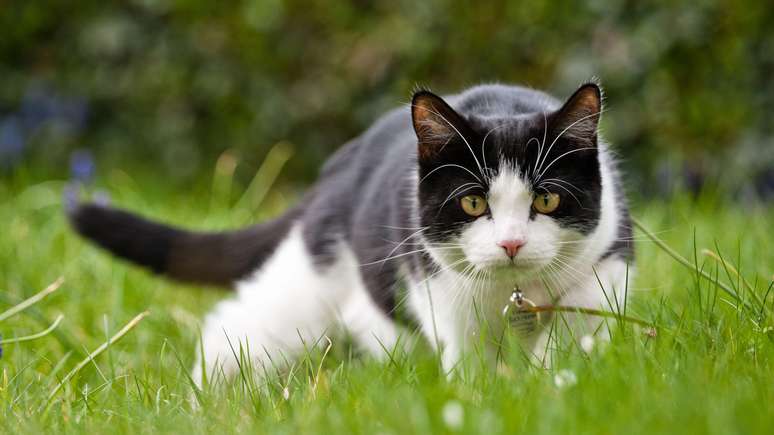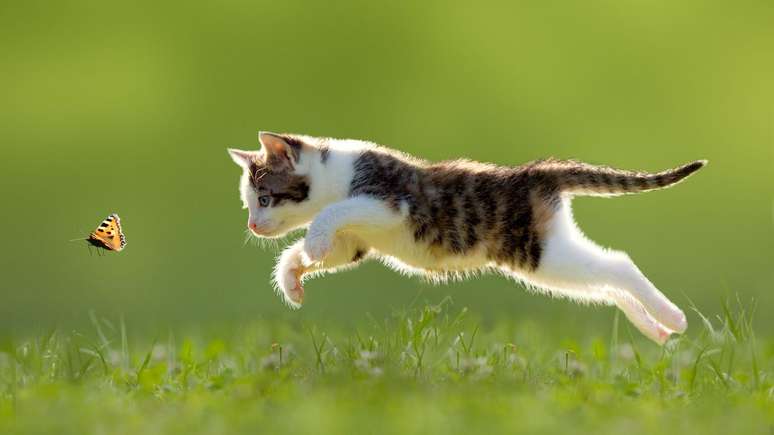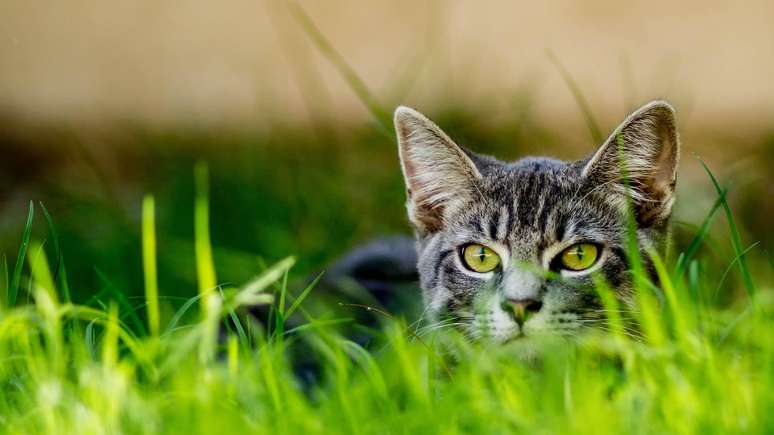According to one study, 2,084 different species have already been devoured by human-domesticated cats.
There are exotic species, such as the American crayfish, pike, cane toad, American bullfrog, and raccoon, that tend to dominate statistics and reports on the impact of invasive animals on species extinction.
But few invaders have caused as much damage to biodiversity as one of the most fascinating pets: cats.
There are around 4 million cats living in Spanish domestic homes alone (on average one for every 12 inhabitants). Of these, 120 thousand end up abandoned on the streets every year.
In Brazil, the proportion is even higher: one in every seven inhabitants, on average, or 27.1 million, according to the 2022 Pet IPB census.
Lone predator and relentless hunter; agile, fast, voracious and with a strong territorial instinct. The cat is a cruel and wild carnivore, but also captivating. It is an example of evolutionary perfection.
All these characteristics make cats an extremely reluctant species to be domesticated, with a strong tendency towards freedom and disobedience.
The largest vertebrate predator
Cats have killed more vertebrates than any other predator.
Their cosmopolitanism, their efficiency as carnivorous animals and their enormous ability to adapt have allowed them to colonize the entire world, from the subantarctic islands to the hot and dry regions close to the tropics.
And their great fertility makes them a demographic bomb that is very difficult to deactivate.
The fastest extinction of a species was caused by a cat.
Tibbles was the lighthouse keeper’s mascot on Stephen Island, a small rocky protrusion between New Zealand’s two main islands. She lived a strange flightless nocturnal bird, similar to a lark.
British ornithologist Lionel Walter Rothschild (1868-1937) described the bird in 1895 with the scientific name Xenicus lyalli— the Stephen’s Island lark.
A millionaire, Rothschild purchased all known dissected specimens and dedicated the bird’s name to the island’s lighthouse keeper, D. Lyall.

In total, 13 examples are known, the same ones that Tibbles the cat placed at the feet of his owner.
Passionate about ornithology, the lighthouse keeper dissected them before sending them to the Rothschilds. And no new specimens have been found since then.
Tibbles specialized in hunting this bird. He discovered them and single-handedly exterminated the species in the cold winter of 1895.
Accordingly, the Stephen’s Island lark and the dodo (Raphus cucullatus) began to share the unwanted honor of being extinct species before being described by science.
To know more:
More than 1 million birds per year
Very conservative calculations have led some authors to estimate that cats consume more than 1 million birds per year, on islands such as Kerguelen, in the southernmost part of the Indian Ocean.
And it is known that, in just 75 years, cats have caused several species of reptiles to disappear on small islands such as Santa Luzia, Cape Verde.
There is also the case of the Canary Islands, which belong to Spain.
It is estimated that the arrival of cats in the archipelago, 2 thousand years ago, is one of the causes of the disappearance of some birds, two giant rodents and the giant palm lizard.
Despite their small stature and countless memes of adorable kittens on social media, domestic cats (Felis catus) are killing machines, equipped with retractable claws, sharp fangs and night vision.
These powerful predators can be anything but picky. They are always looking for prey to hunt or carrion to collect. And they eat everything they have available.

Thanks to man, cats have spread throughout the world in recent millennia.
These ferocious cats were probably domesticated 10,000 years ago in the Middle East.
They currently live on every continent except Antarctica.
Cats have been introduced to hundreds of islands and have become one of the most widespread species on the planet.
Very varied diet
Cats’ cosmopolitanism has led them to alter many of the ecosystems into which they have been introduced.
Cats transmit new diseases to many species, including humans.
Its ecological impacts exceed those caused by native felines and other medium-sized predators.
They threaten the genetic integrity of wild cats and feed on native fauna, driving many species to extinction.
For all these reasons, free-range cats (i.e. domestic or wild cats with access to their outdoor environment) constitute one of the most problematic invasive species in the world.
A meta-analysis of 530 articles, books and scientific reports published over more than a century has led to the first comprehensive documentation of the animals commonly eaten by domestic cats.
The list of victims is long: 2,084 different species.
Most of them are birds (981 species), followed by reptiles (463), mammals (431), insects (119), amphibians (57) and other taxonomic groups (33).
The most common prey are rats, mice, sparrows and rabbits, but there are also records of cats hunting surprising prey, such as Galapagos tortoises, Australian rheas and even domestic cattle.
Some of the creatures mentioned in the list, including humans, are too large for cats to hunt.
But they reflect the scavenging tendencies of felines.
Nearly 350 of these species appear on several red lists of endangered species.
And many of them are already extinct.
Many are small birds, mammals and reptiles endemic to the islands that have no natural predators such as cats.
This means that unaware prey have no defensive reactions.
Eleven of the recorded species, including the Hawaiian crow (Corvus hawaiiensis), the New Zealand quail (Coturnix novaezelandiae) and the white-footed rabbit rat (Conilurus albipes) of Australia, are considered extinct.
insect eaters
The data contained in the article is conservative. The records are a representation of the species that serve as food for cats, but felines eat far more than we can identify.
Insects, for example, represent just under 6% of the species eaten by cats.
But this number is probably an underestimate, due to the difficulty of identifying insect remains in the stomachs and excrement of cats, compared to the feathers or bones of vertebrates.

Furthermore, the number of prey increases proportionally to the number of scientific publications.
And, since most of the sources used for the meta-analysis are from Australia and North America, this geographic bias likely obscures the totality of species consumed.
After all, animals native to these continents dominated the data set.
Future research will certainly help understand the impact of cats in other regions that have extraordinary biodiversity, such as South America, Asia and Africa.
Numerous endangered creatures will then be discovered that will end up in cat litter boxes.
But the truth is that blaming cats ends up scapegoating a much bigger problem, one that involves our own ecological commitments.
If we humans can’t change our behavior to protect biodiversity, why should we expect the same awareness from cats?
*Manuel Peinado Lorca is professor emeritus and director of the Royal Botanical Garden of the University of Alcalá, Spain.
This article was originally published on the academic news website The conversation and republished under a Creative Commons license. Read the original Spanish version here.
Source: Terra
Rose James is a Gossipify movie and series reviewer known for her in-depth analysis and unique perspective on the latest releases. With a background in film studies, she provides engaging and informative reviews, and keeps readers up to date with industry trends and emerging talents.






-1jecmk06d7aye.jpg)
